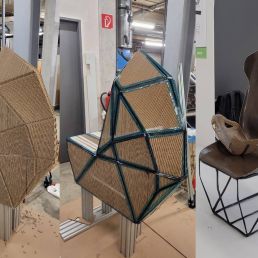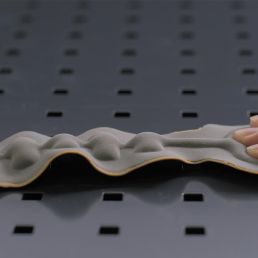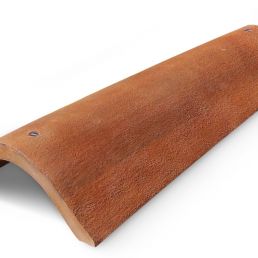A Future without Oil
Sustainable Materials and their Potential
form 225
March/April 2009
publisher
Birkhäuser (Basel)

Given that resources like oil are becoming increasingly scarce and prices have risen, the demand for alternative materials is growing. Currently bioplastics are breaking into the market in a big way. On the other hand materials can be saved if they are used in closed cycles. An overview of sustainable materials.
Sustainable use of materials
The sustainable use of materials was recently the primary theme of the first nutec congress in Frankfurt, where the preconditions for unscrupulous consumption and natural disposal were discussed. “Cradle to cradle” is one of the solution approaches for more sustainability and stands for a paradigm change: Ideally products are composed of components which are suitable for circulating in biological and technical cycles.
To allow for the creation of a technical cycle, demands on products must be described in such a way that after use they can be easily separated into their components and returned to the natural material cycles. Here, attention must be paid to avoiding the use of chemical aids and environmentally damaging additives in production, assembly and disassembly. Among the first successful product examples are office chairs by Steelcase, which can be disassembled in a few movements, and wooden architecture by Thoma, which consists entirely of wood – neither glue nor chemical substances are used and joins are made using wood plugs.
The biological cycle describes the production, use, disposal and retrieval of a material in a biological way. “Garbage is nutrition” according to the catchy idea which is especially applicable to plastics. New polymers which are not based on crude oil but on renewable raw materials are in demand. Foils made of potato starch (Bioplast), packaging made of corn starch (NaturWorks), insulation plates out of cellulose (Isoflex), foams made of castor oil (Elastogran) or algae-based substances (VPZ) are the most vivid examples of a new way of working with materials and the increasing environmental responsibility of industrial nations.
The issue has now also become interesting for chemical giants, as predicted growth rates for biopolymers are gigantic. Almost every week they launch new, more sustainable materials on the market. And manufacturers of technical semi-finished plastic products, such as Ecogehr, have also recently established product lines based on bioplastics.
www.steelcase.com
www.thoma.at
www.bioplast.com
www.natureworksllc.com
www.elastogran.de
www.vpz.at
www.isoflex.se
www.ecogehr.de
image source: Natureworks
Ecoblaq molecular wood colours
23 March 2024
Ecoblaq is a molecule manipulation method, a natural chemical reaction, making…
Natural fiber reinforced car seat
22 October 2023
The focus of the project "Design for Recycling" is a seat shell that is made…
MotorSkins morphing textiles
19 April 2022
Berlin based start-up MotorSkins designs and produces textiles with embedded…
3D Pioneers Challenge 2022
15 December 2021
The 3D Pioneers Challenge 2022 adresses tech pioneers who pave the way for…
IGNIS – Light from waste heat energy
12 August 2020
The availability of affordable, independent and, above all, clean electrical…
Brake disc with reduced fine dust
21 April 2021
Fine dust endangers our health. One of the main sources is traffic, especially…
Texoversum
15 July 2023
With the "Texoversum", Reutlingen University has put into operation a training…
Invisible Terracotta Solar Rooftile
10 May 2023
The family-run business Dyaqua has developed a technology to integrate a…
Xarvio – Digital Farming
8 January 2021
BASF Digital Farming GmbH has received the renowned Crop Science Award for the…








